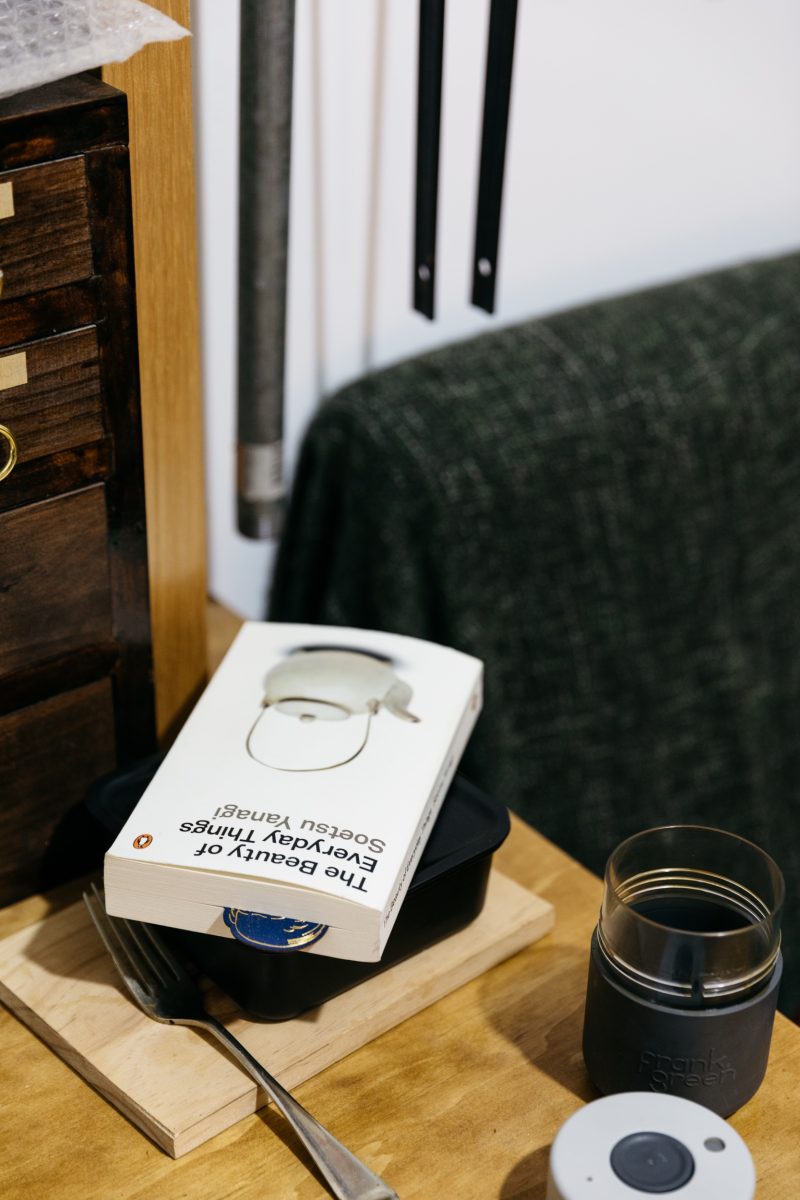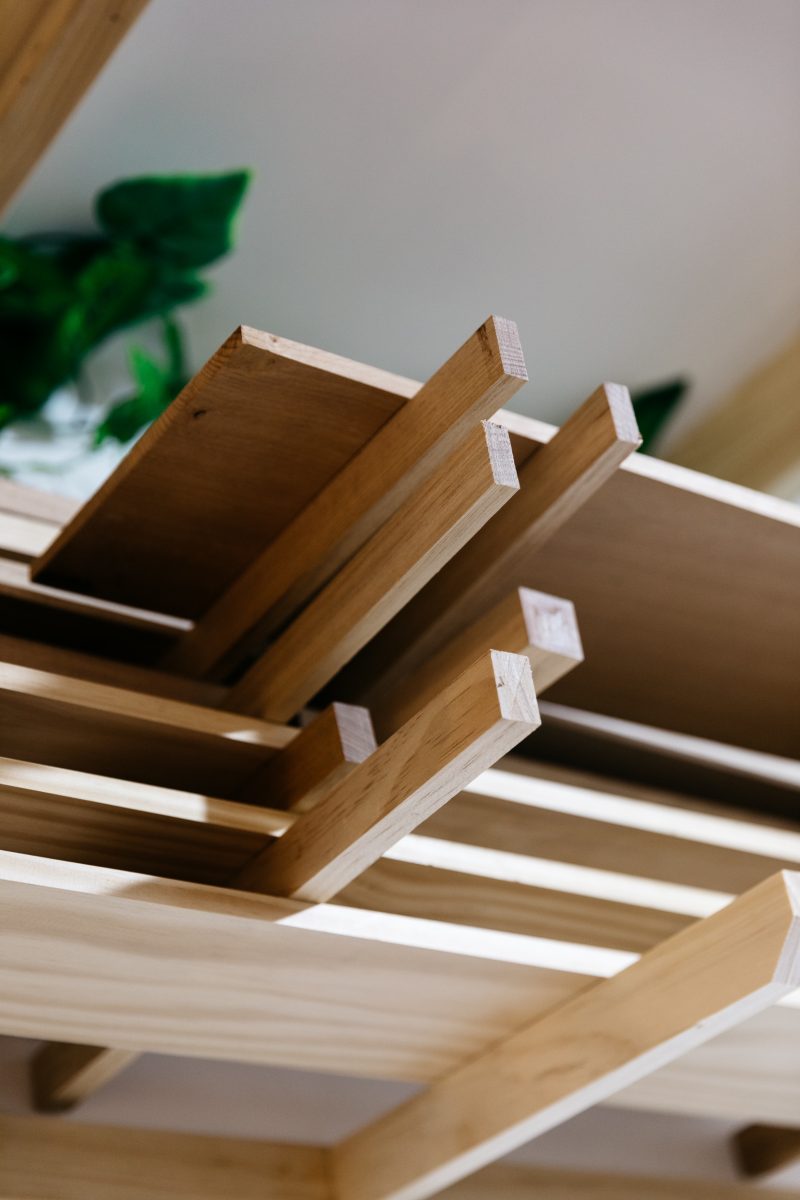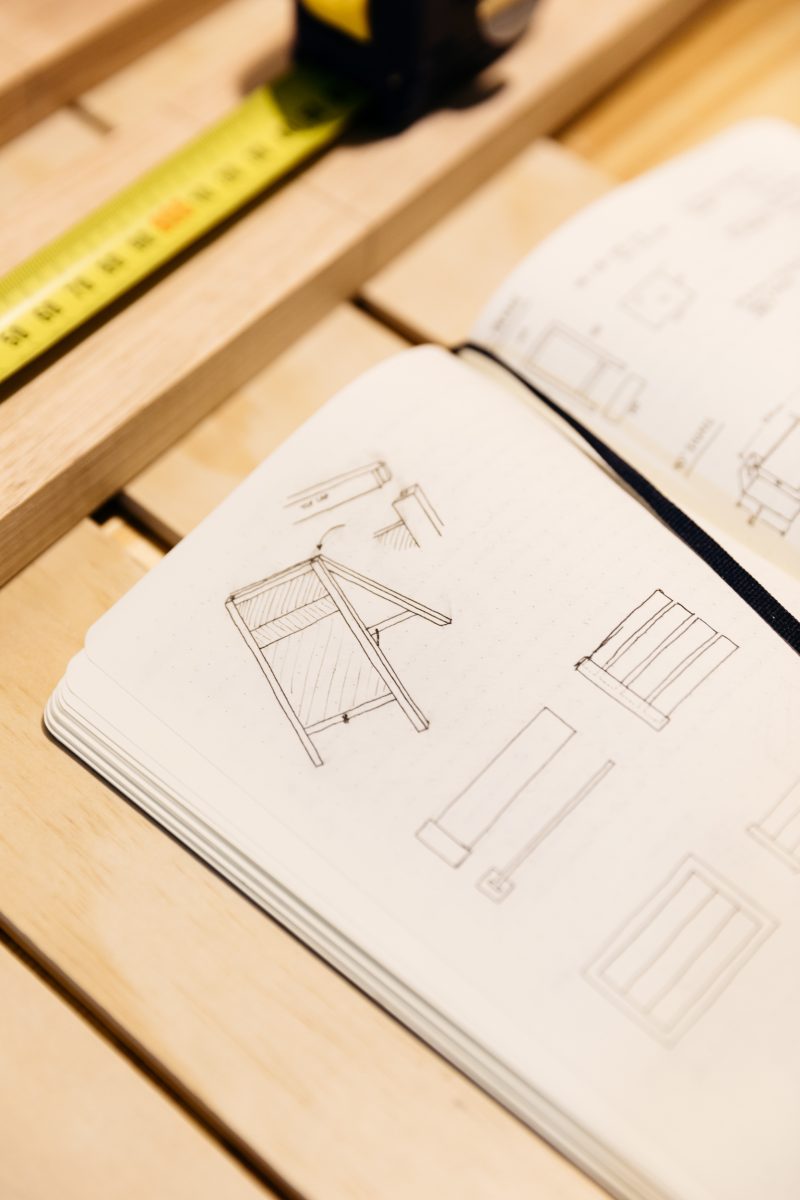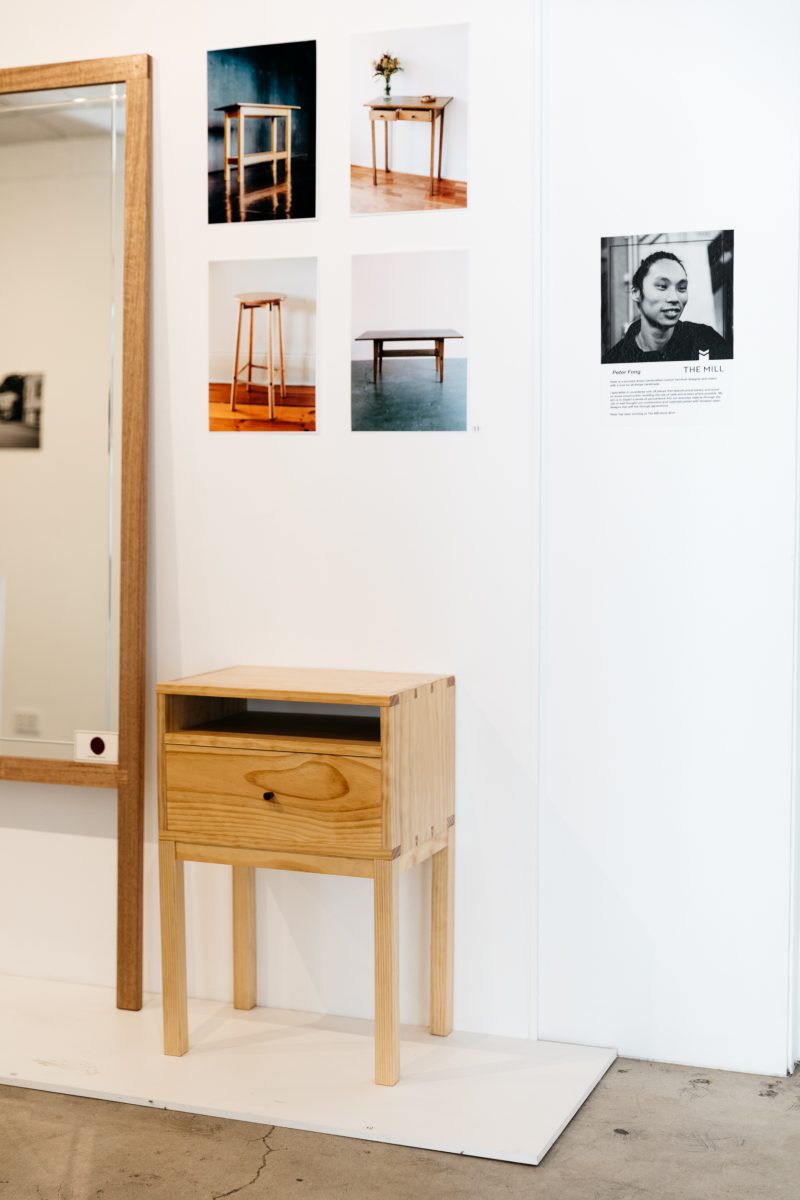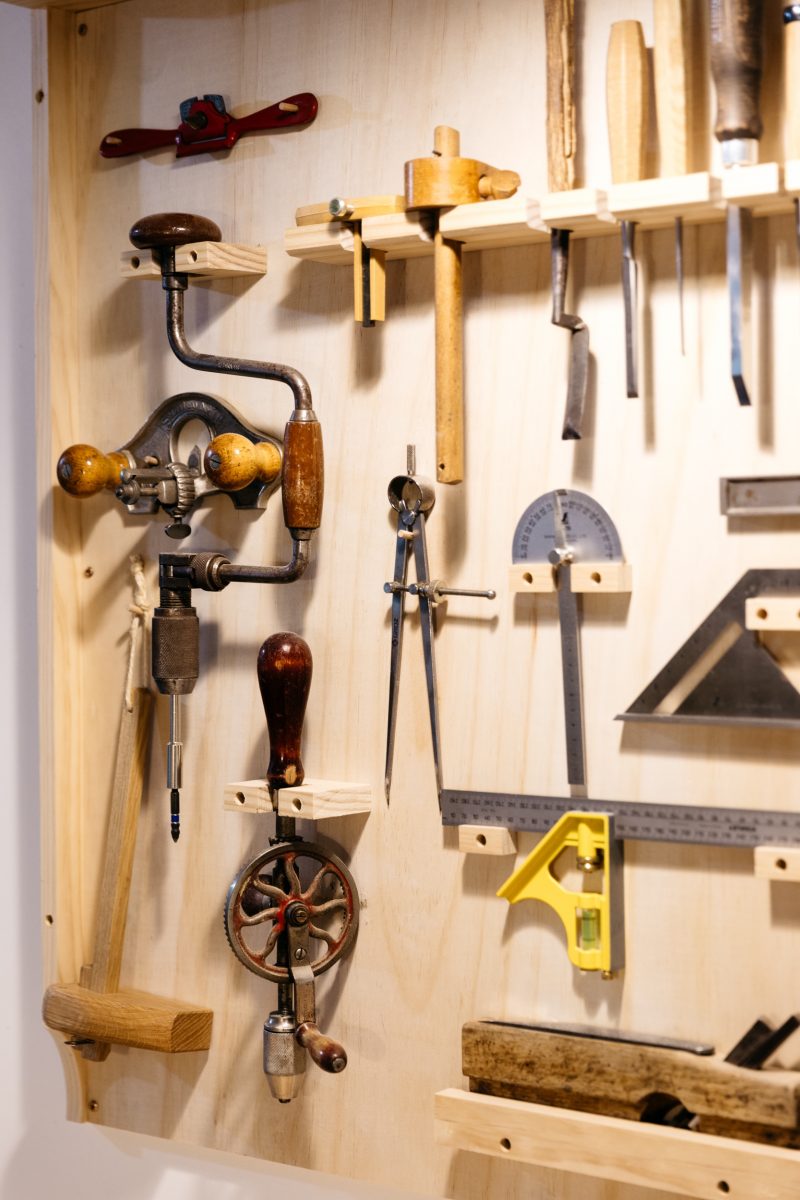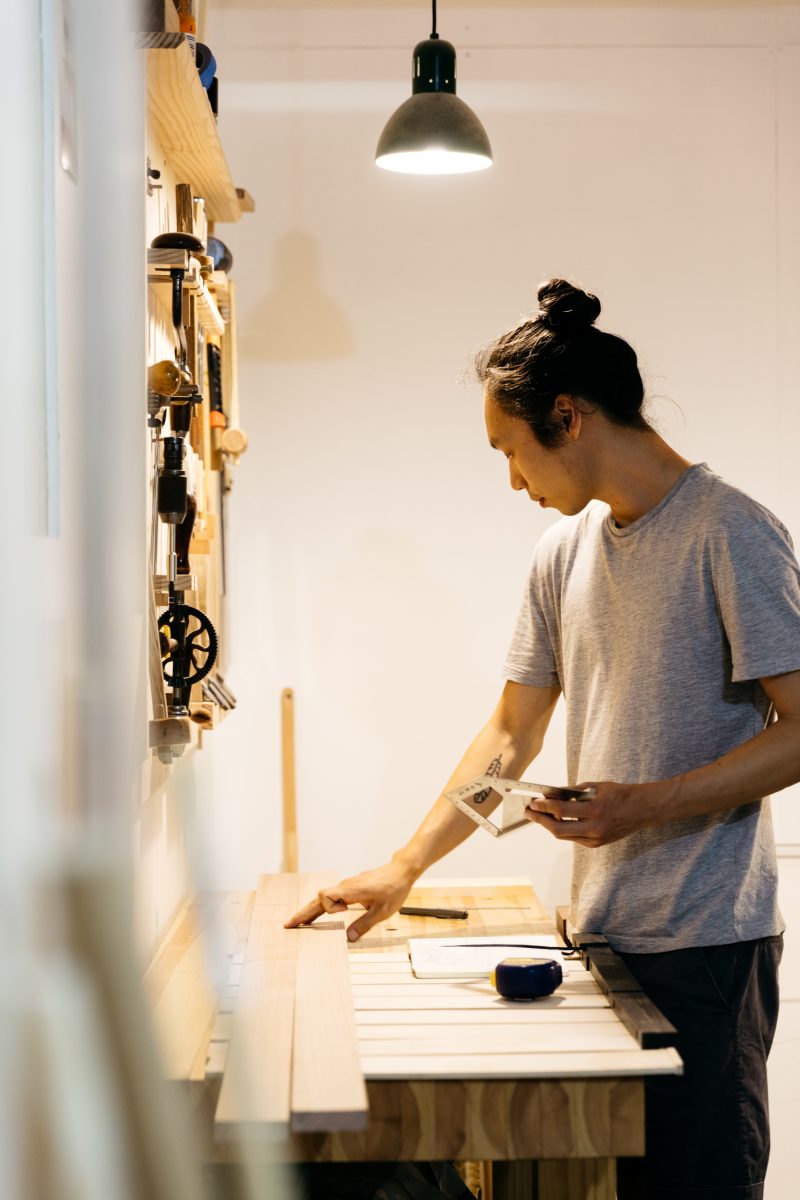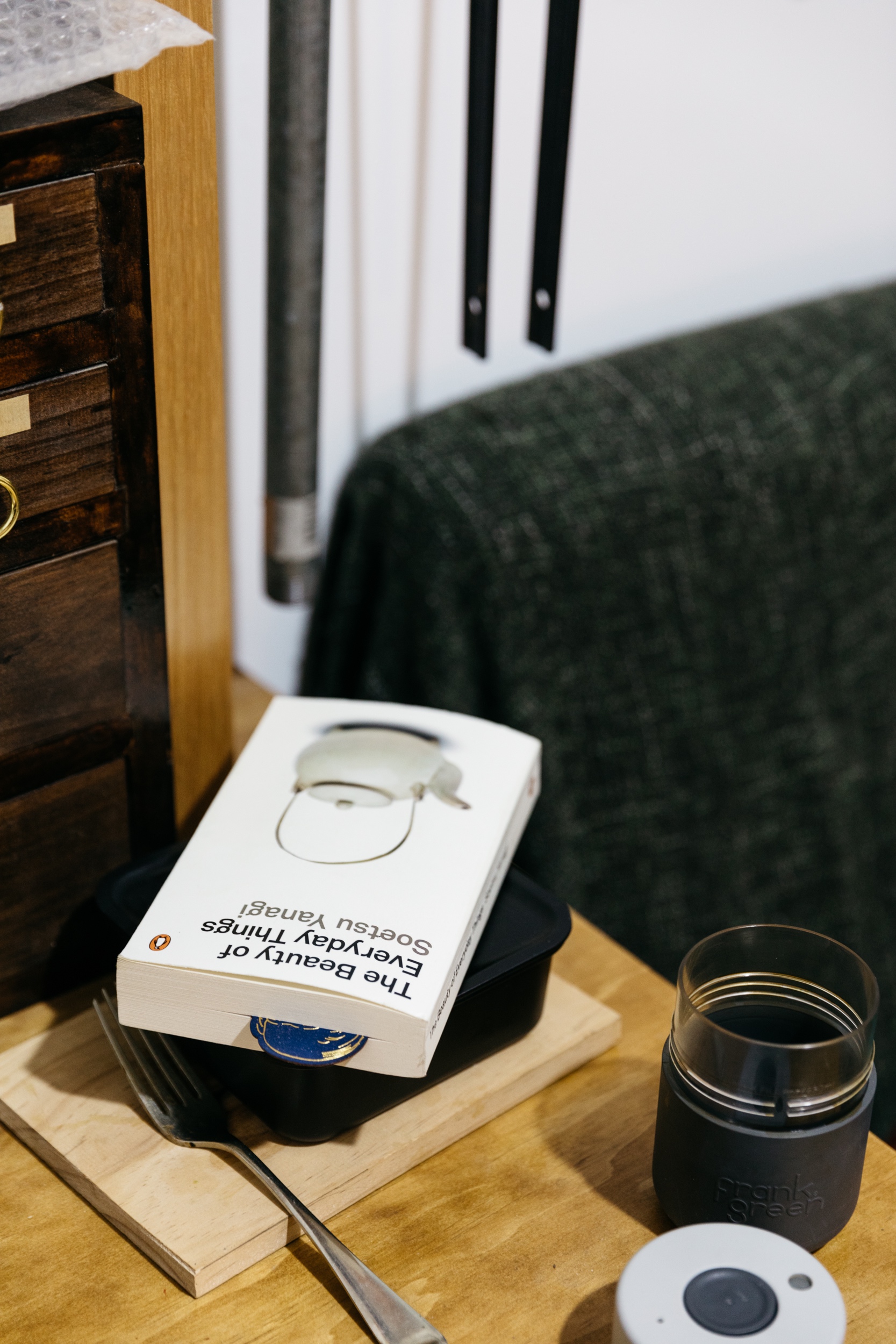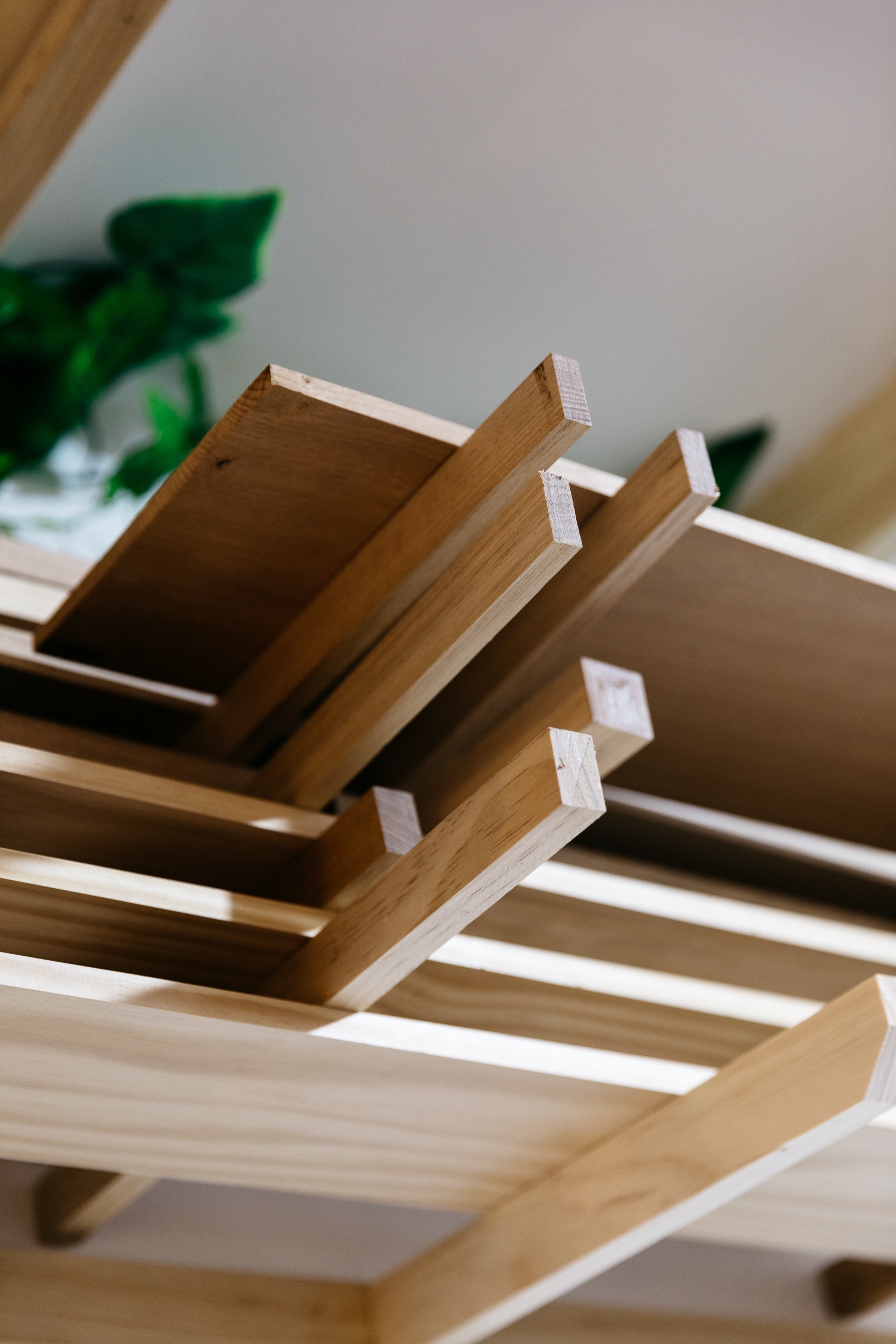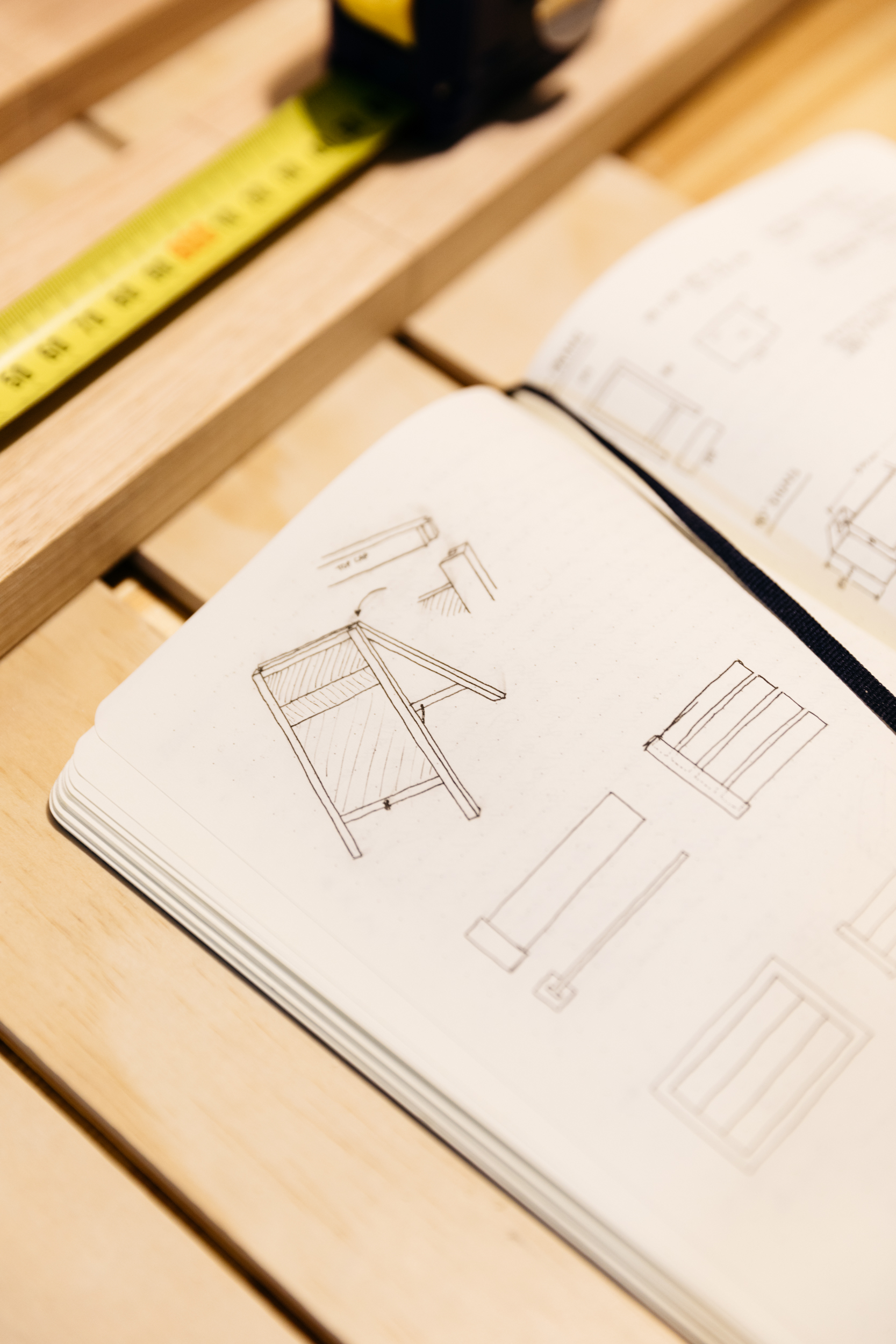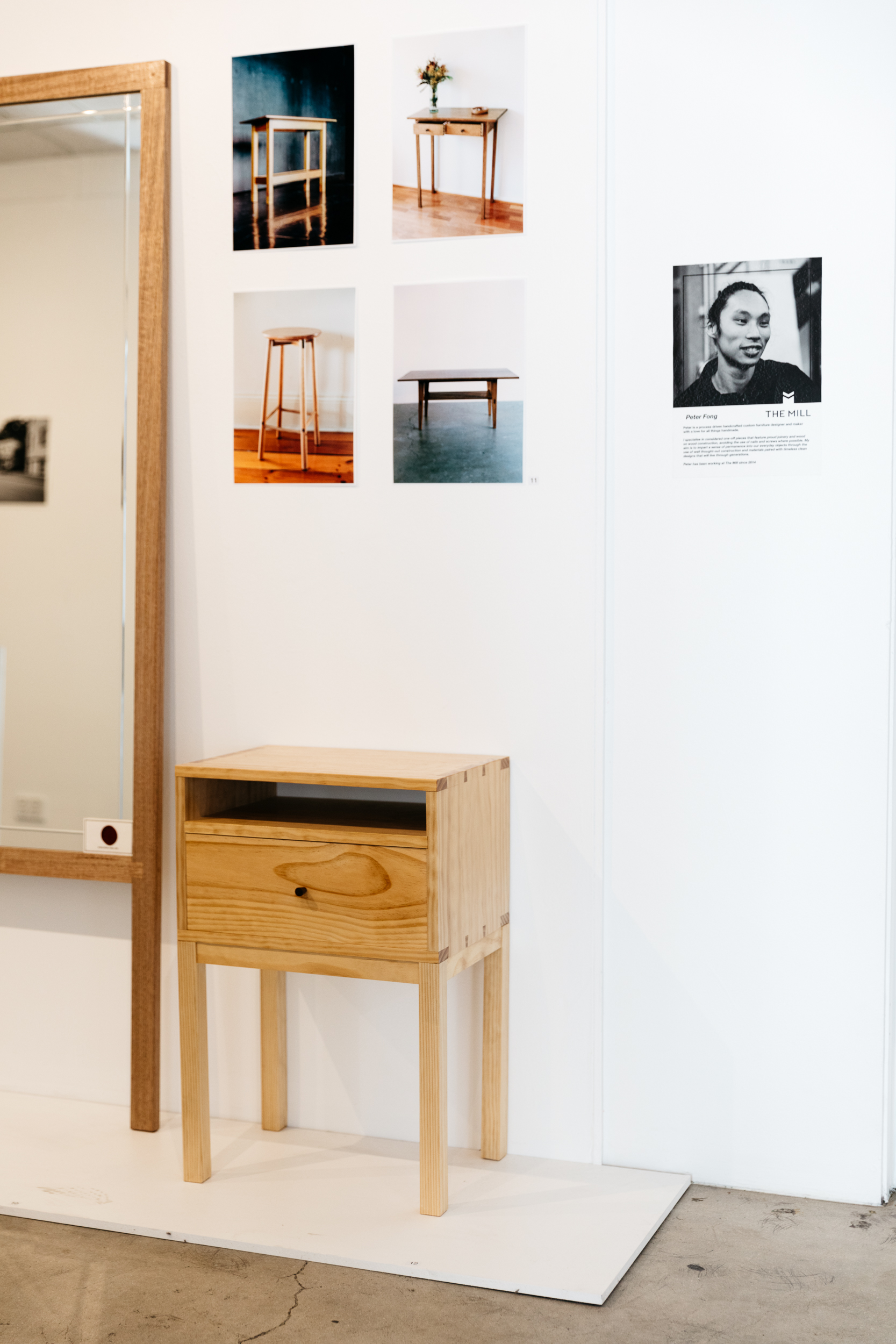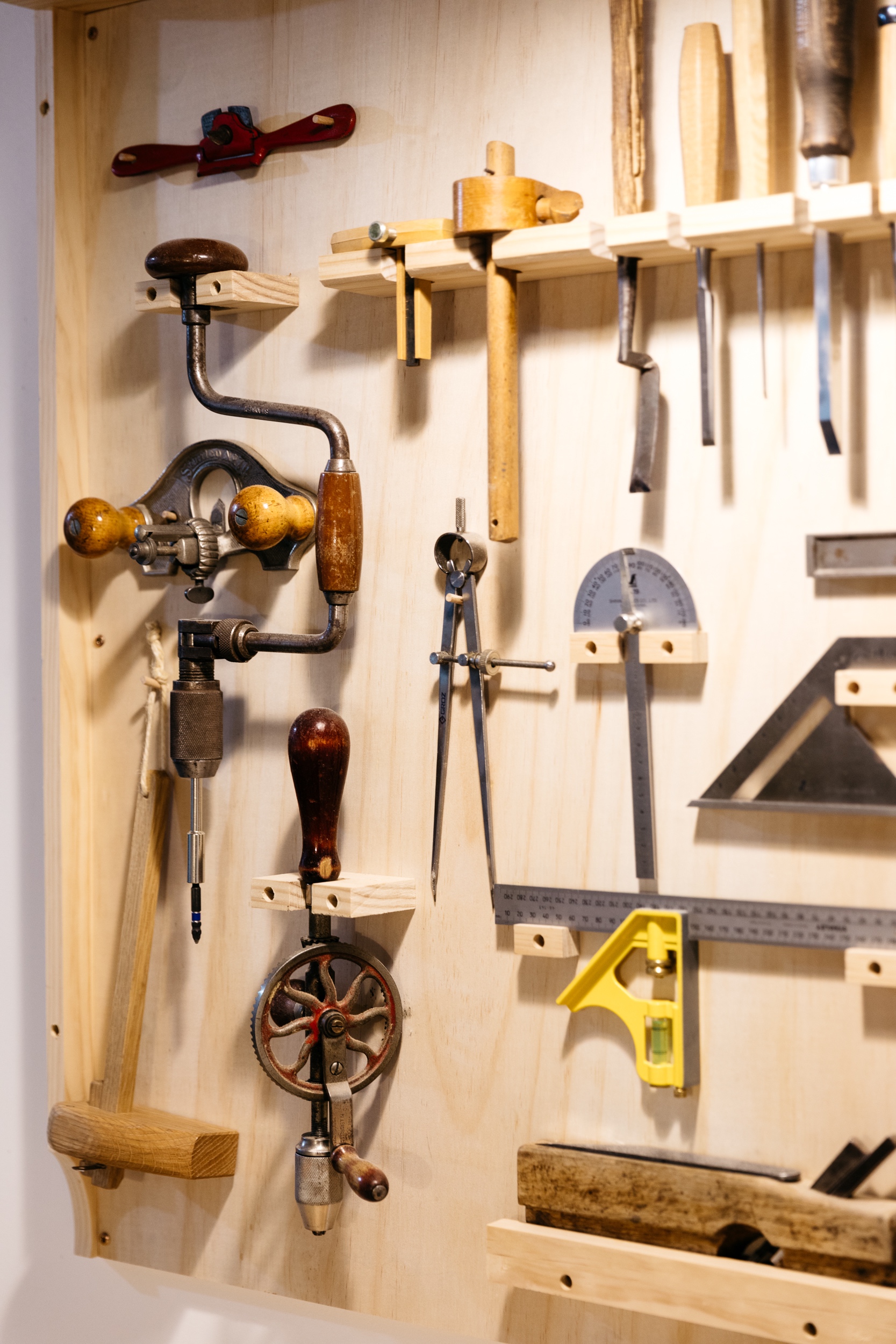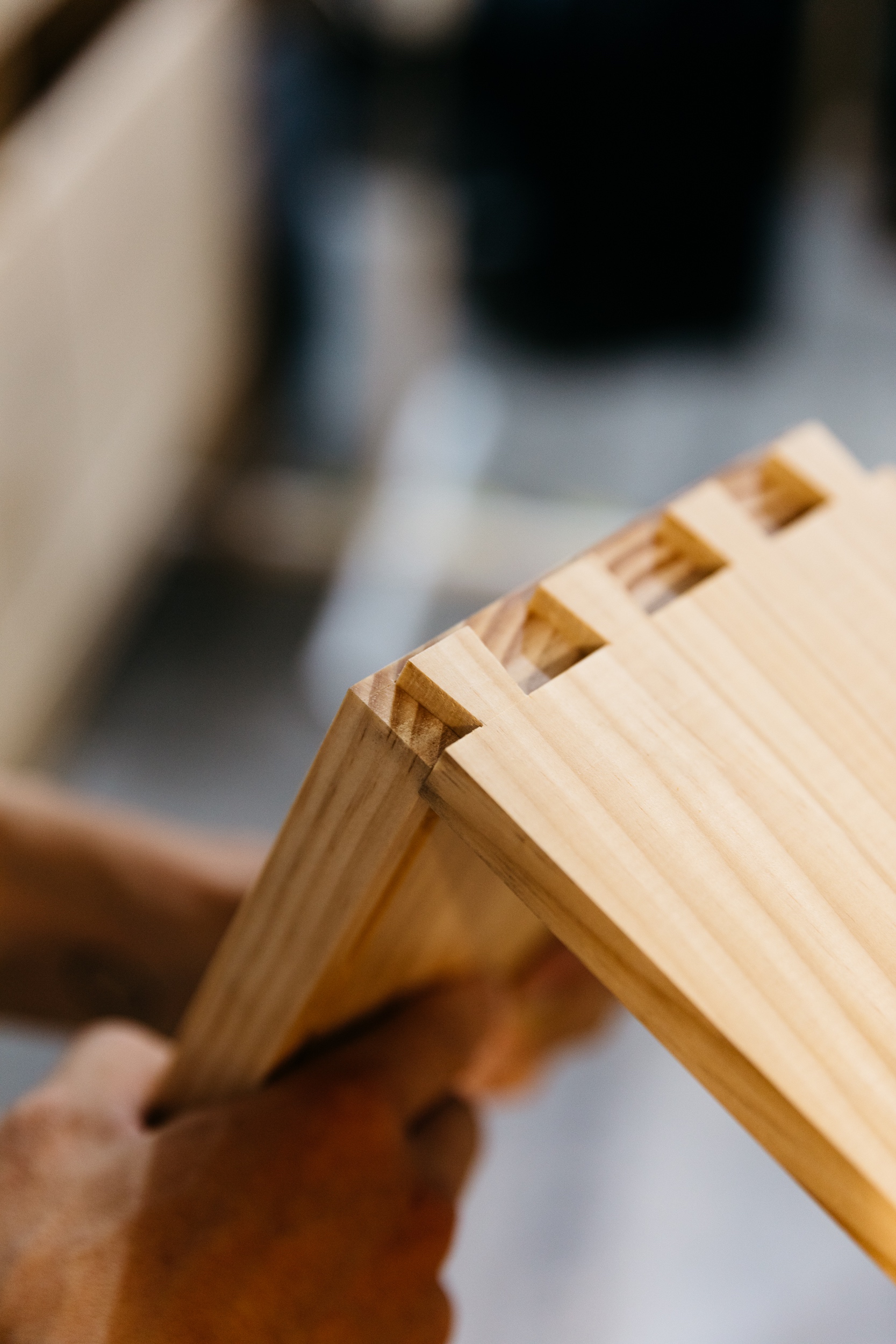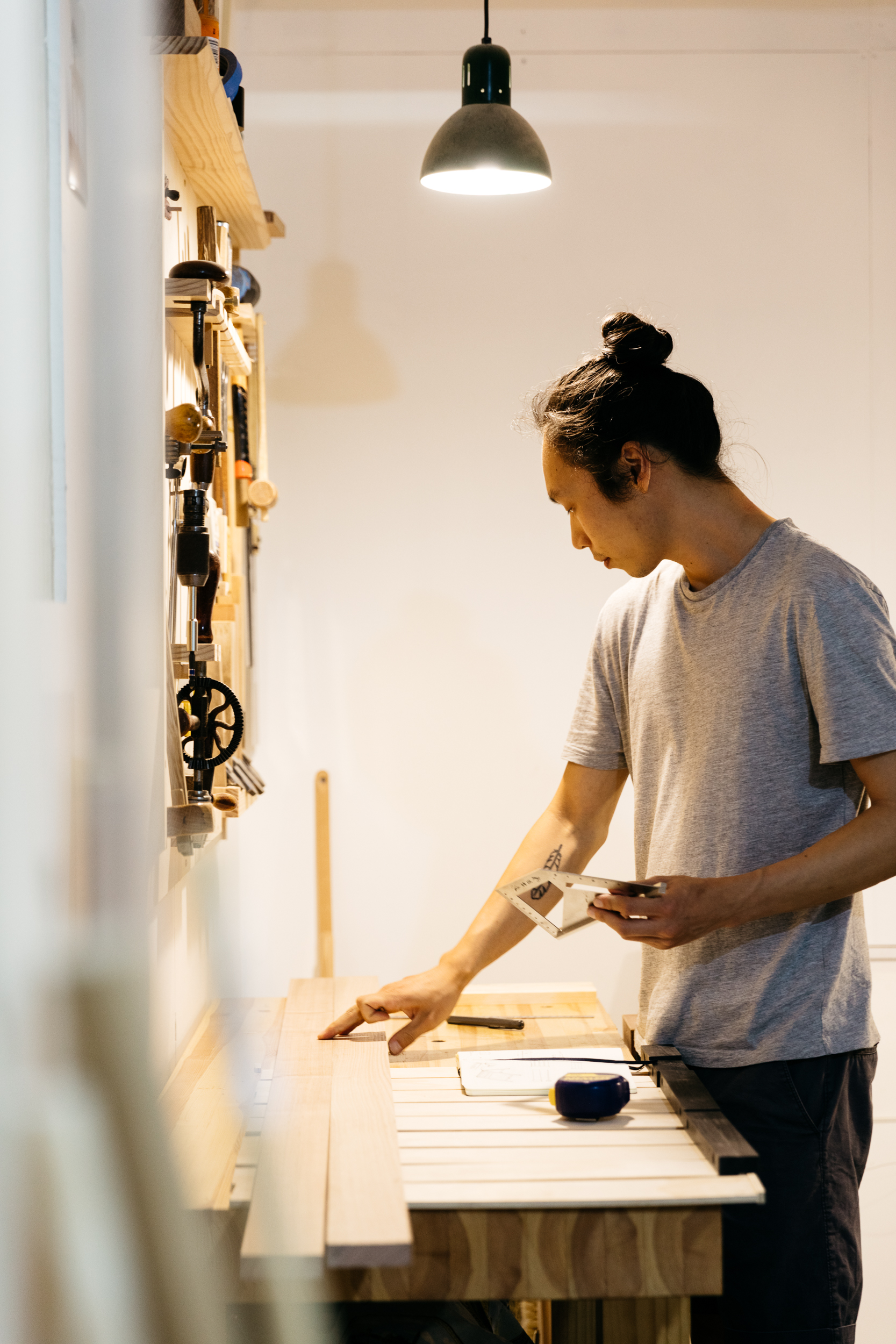The quiet order of illustrator-turned-furniture maker Peter Fong
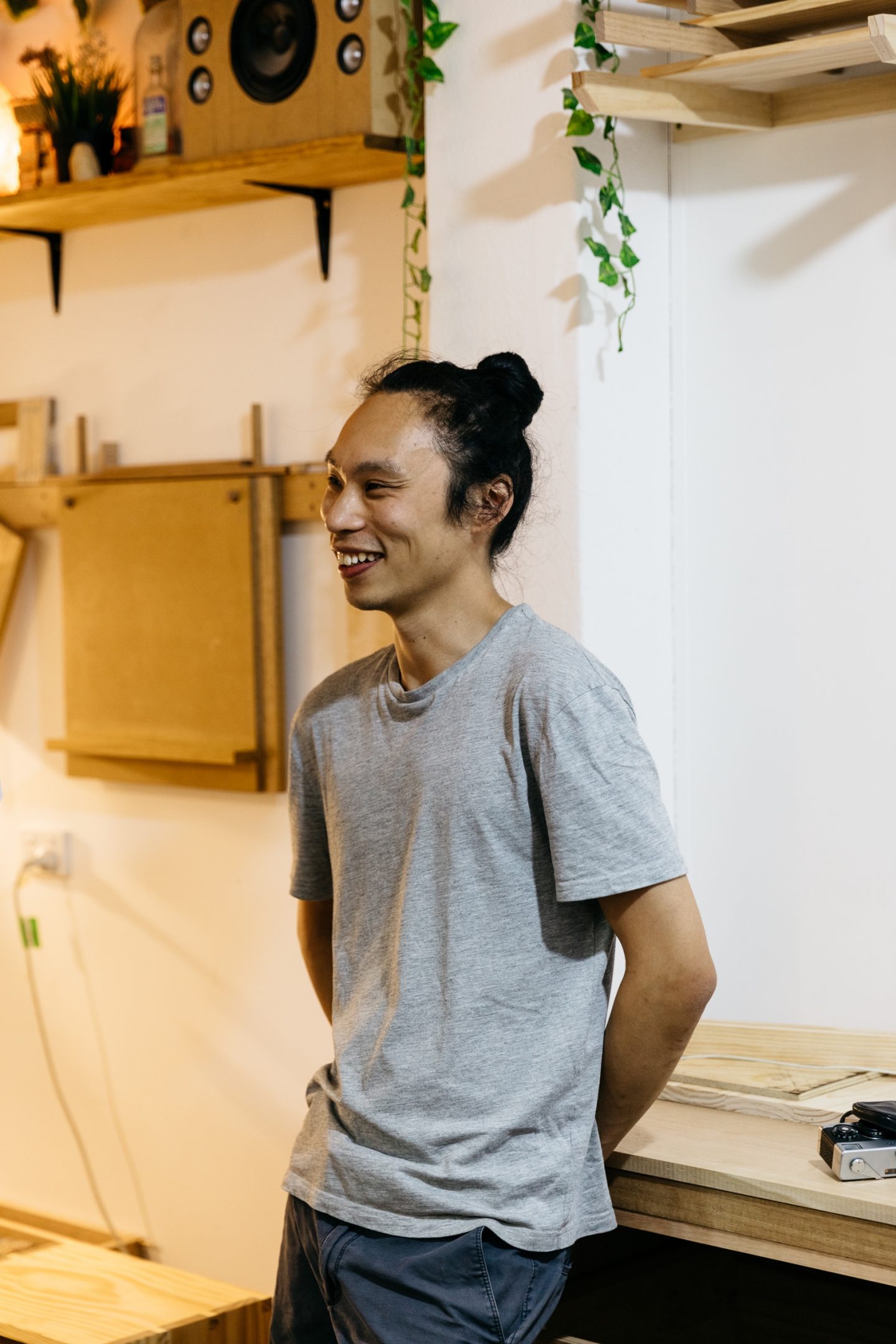
Hidden among the warren of artist spaces at Angas Street’s The Mill sits furniture maker Peter Fong’s studio, a tiny room of four white walls and a white ceiling lined with wooden beams. Fittingly, he built it with his own hands.
A window above his workbench gives a glimpse into the warehouse outside, where a sort of creative turmoil – artists of various disciplines working under one roof, their triumphs and failures piling high around them – takes hold. But Fong’s studio is a small sanctuary for the introspection that is the cornerstone of his creative process, a room where space is governed by the same quiet order that he pursues in his work.
The room reveals something else about Fong: his dedication to making things well.
“After I’d finished building this room, someone came in to inspect it to make sure it was structurally okay,” he says. “They were pretty impressed by how well it was built. If I am going to do something, I want to do it properly.”
Along one wall, his tools – chisels, rulers, hammers, drills, Japanese saws – are hung meticulously above the workbench where the parts of Fong’s current project (a sign he has been commissioned to make for the Fringe) lie ready to be pieced together.
On his desk is a paperback copy of the 20th century Japanese philosopher Soetsu Yanagi’s The Beauty of Everyday Things and a drawing of a design Fong is currently working on. Precise, detailed and labelled in his tiny, perfect script, the drawing is the only evidence of his former practice as an illustrator.
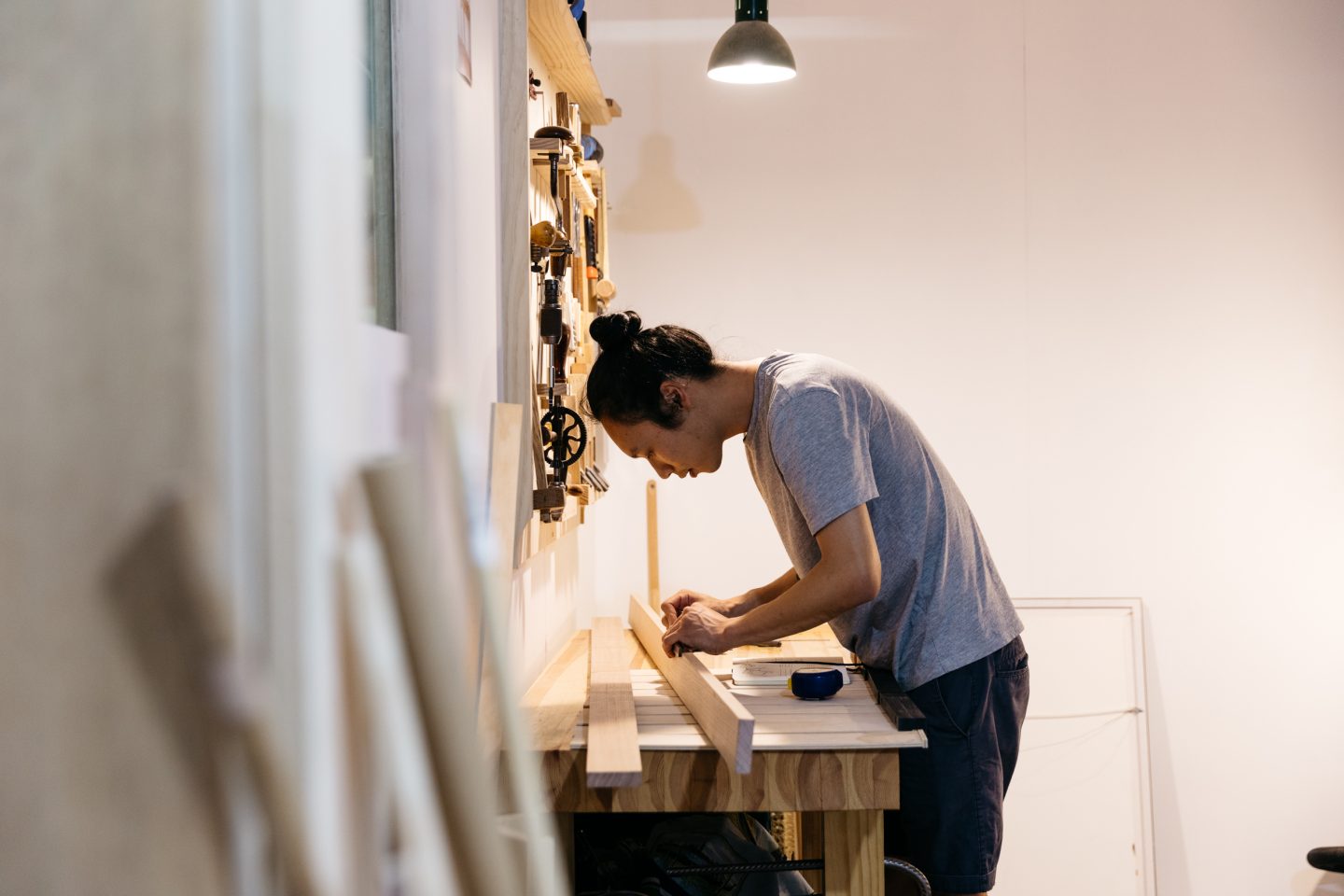
“I draw when I’m trying to work out a design for a piece of furniture, but working with wood and making things is what I want to do right now,” he says.
About a year ago, Fong stopped illustrating and began making furniture. A gifted draughtsman who studied illustration at the University of South Australia, he became a resident at The Mill in 2013 where for several years he produced finely detailed ink illustrations that recalled the tone and intricacy of antique bookplates.
The transition from illustrator to furniture maker was a giant leap, one which took the artist from two dimensions into three, fine lines to broad strokes, pen to chisel.
“There’s creativity in both, but otherwise they are completely different,” says Fong.
Having decided to become a furniture maker after making just a few objects for his own home, Fong began teaching himself the concepts and theory and took to his new vocation at breakneck speed.
“I’ve always liked making things with my hands. I like working out how to connect two pieces of wood together in the simplest way.”
When Fong sees a piece of furniture he admires – perhaps a mid-century chair, or a Danish side table or a Japanese cabinet – he bends down and begins to explore the design of the object. He observes the joinery. In his mind, a picture of how the maker created something functional and beautiful from a piece of wood starts to form.
“If you’re patient and you look carefully it’s pretty intuitive,” he says.
“You can kind of see how something works, how it fits together.”
In the past year, Fong has produced work that demonstrates the restraint of someone who has honed their craft for much longer. His work is pared down, dedicated to revealing lines, tone and texture within the grain of the wood.
“There’s creativity in both, but otherwise they are completely different,” says Fong.
Having decided to become a furniture maker after making just a few objects for his own home, Fong began teaching himself the concepts and theory and took to his new vocation at breakneck speed.
“I’ve always liked making things with my hands. I like working out how to connect two pieces of wood together in the simplest way.”

When Fong sees a piece of furniture he admires – perhaps a mid-century chair, or a Danish side table or a Japanese cabinet – he bends down and begins to explore the design of the object. He observes the joinery. In his mind, a picture of how the maker created something functional and beautiful from a piece of wood starts to form.
“If you’re patient and you look carefully it’s pretty intuitive,” he says.
“You can kind of see how something works, how it fits together.”
In the past year, Fong has produced work that demonstrates the restraint of someone who has honed their craft for much longer. His work is pared down, dedicated to revealing lines, tone and texture within the grain of the wood.
Yet he still revels in the craft of furniture making. Every day in the studio is filled with unexplored potential. Of all the furniture he’s made, he is fondest of the table where he spends his time labouring over pieces of wood.
“I love workbenches,” he says. “They are the foundation of what I do.”
